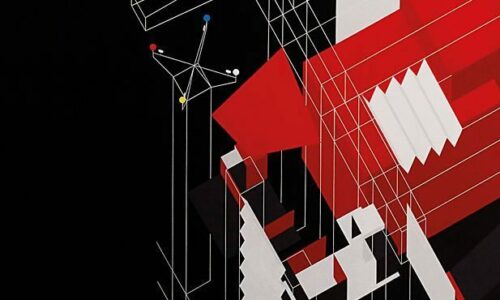22 August 2014
If asked to describe the space where the Scottish Ensemble will stage their site-specific concert next month, I’d be inclined to say “empty”: walls, windows, floors and ceilings. Concrete and glass with nothing but me between them; empty of sound but for the hum of distant traffic outside and below. And yet, like many empty spaces, it stirs the imagination: there is a palpable sense of its history, of what once was here and – as I move through the sunlit motes of floating dust and listen to my echoing footsteps – a sense of expectation and of what is to come.

If that seems overly cerebral or contemplative, then my conversation with the visual artist Toby Paterson, about his interest in architecture and how he came to choose this venue for the concert, expands its scope to the big ideas, the ways in which music and architecture touch our lives.
“Jonathan [Morton, Scottish Ensemble’s artistic director] and I wanted to do something experimental in an unconventional venue, something more challenging than the binary experience of a traditional concert format. I wanted to find somewhere that would be suitable for having a promenade element, and which from an architectural point of view would be impressive and imposing, but also interesting internally and with views to the outside.”
Paterson goes on to explain the rich potential of Glasgow for venues which fit this bill, a potential restricted by some of the practical implications:
“There is a lot of empty space in Glasgow, and you would think that commercial property managers would be keen to use it, to engage with the amazing cultural activity in the city, but many have a very narrow view. In the case of this venue, however, they were very open to our suggestions and – even if they thought we were a bit insane – to helping us make it work.”

Toby will also design the interiors of the space for the concert, constructing a bar, seating and lighting the space.
“You’ll move up through this amazing staircase into what will be the bar area. I’m working on a series of sculptural objects and perspex screens that will echo elements of form and colour that are already there. In a way, I’m working to activate the space, but the space itself will do most of the work.”

Standing in the main performance space, where the exposed concrete of the building’s brutalist exterior has continued through to the interior walls and ceiling, massive windows afford a panoramic view of Glasgow’s skyline: a jumble of architectural styles which Paterson describes as being “like a palimpsest on which you can read a secret history of the city, even among the mistakes and missteps.” As a photographer my primary subject is people. I look mostly for the moment when light and colour illuminate a facial expression to give some insight into a life and an inner world. And so to be asked to photograph the shapes, forms and abstract details of a building – to see them and to feel them in a new way – was challenging but rewarding, a phrase which might easily be applied to Toby Paterson’s vision for the concert:
“I wanted to find an intriguing space that an audience wouldn’t have experienced before, to encourage a metaphorical as well as a literal view of the city. I first came into direct contact with buildings like this through skateboarding, and so for me there was an element of teenage transgression. There’s an amazing tension, and so much of this music and architecture is worth taking a new perspective on. I hope that it might bring in a new audience from fields like art, architecture and even skateboarding.”

